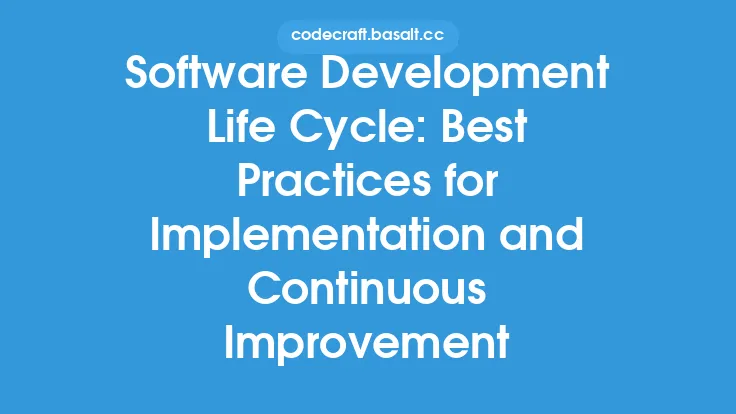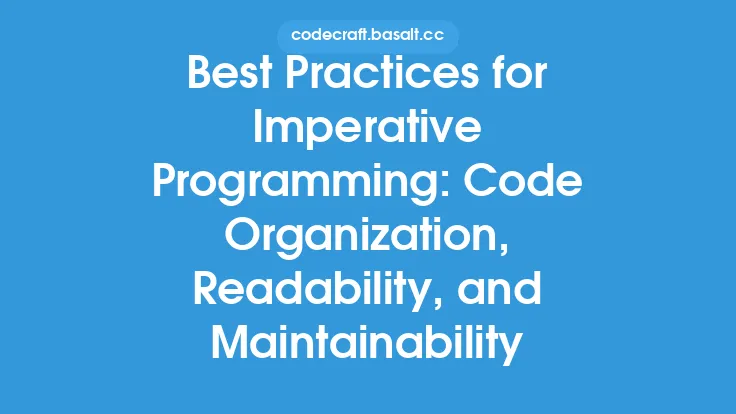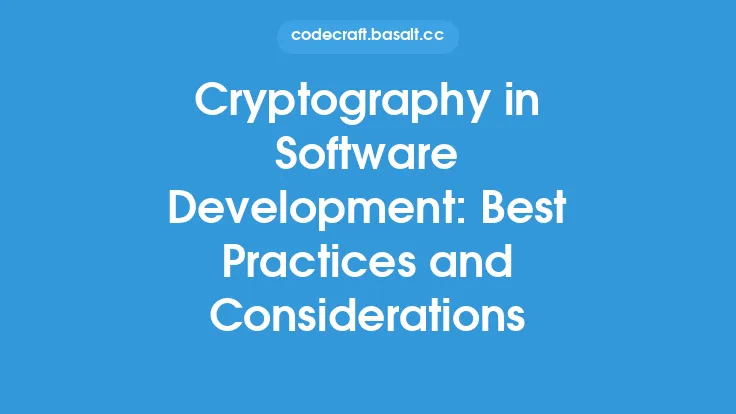Knowledge sharing and documentation are essential components of software engineering, as they enable teams to collaborate effectively, reduce errors, and improve overall productivity. In the context of DevOps and collaboration practices, knowledge sharing and documentation play a critical role in bridging the gap between development and operations teams, ensuring that all stakeholders have access to the information they need to perform their jobs efficiently. In this article, we will explore the best practices for knowledge sharing and documentation in software engineering, highlighting the benefits, challenges, and technical considerations involved.
Introduction to Knowledge Sharing and Documentation
Knowledge sharing and documentation are closely related concepts that involve capturing, organizing, and disseminating information within an organization. Knowledge sharing refers to the process of exchanging information, expertise, and experiences between individuals or teams, while documentation involves creating and maintaining written records of this information. In software engineering, knowledge sharing and documentation are critical for ensuring that teams have access to the information they need to design, develop, test, and deploy software applications.
Benefits of Knowledge Sharing and Documentation
The benefits of knowledge sharing and documentation in software engineering are numerous. Some of the most significant advantages include:
- Improved collaboration: Knowledge sharing and documentation enable teams to work together more effectively, reducing errors and miscommunication.
- Increased productivity: By providing access to relevant information, teams can complete tasks more quickly and efficiently.
- Reduced knowledge loss: Documentation helps to capture knowledge and expertise, reducing the risk of knowledge loss when team members leave or move on to new projects.
- Enhanced transparency: Knowledge sharing and documentation promote transparency, enabling teams to understand how software applications are designed, developed, and deployed.
- Better decision-making: By providing access to relevant information, teams can make more informed decisions about software development and deployment.
Best Practices for Knowledge Sharing
To implement effective knowledge sharing practices, software engineering teams should follow these best practices:
- Establish a culture of sharing: Encourage team members to share their knowledge, expertise, and experiences with others.
- Use collaboration tools: Utilize collaboration tools, such as wikis, blogs, and instant messaging platforms, to facilitate knowledge sharing.
- Create knowledge bases: Develop knowledge bases, such as documentation repositories, to capture and organize information.
- Provide training and mentoring: Offer training and mentoring programs to help team members develop new skills and share their expertise with others.
- Recognize and reward sharing: Recognize and reward team members who share their knowledge and expertise with others, promoting a culture of sharing.
Best Practices for Documentation
To implement effective documentation practices, software engineering teams should follow these best practices:
- Develop a documentation strategy: Create a documentation strategy that outlines the types of documents to be created, the format and structure of documents, and the processes for reviewing and updating documents.
- Use clear and concise language: Use clear and concise language in documents, avoiding technical jargon and complex terminology.
- Use standardized templates: Use standardized templates for documents, such as design documents, test plans, and user manuals.
- Review and update documents regularly: Review and update documents regularly to ensure that they remain relevant and accurate.
- Use version control systems: Use version control systems, such as Git, to manage document versions and track changes.
Technical Considerations
When implementing knowledge sharing and documentation practices, software engineering teams should consider the following technical factors:
- Tooling and infrastructure: Select tools and infrastructure that support knowledge sharing and documentation, such as collaboration platforms, documentation repositories, and version control systems.
- Security and access control: Implement security and access control measures to ensure that sensitive information is protected and that only authorized personnel have access to documents and knowledge bases.
- Search and retrieval: Implement search and retrieval mechanisms to enable teams to quickly locate and access relevant information.
- Integration with other tools: Integrate knowledge sharing and documentation tools with other software engineering tools, such as issue tracking systems and project management platforms.
Challenges and Limitations
Despite the benefits of knowledge sharing and documentation, there are several challenges and limitations that software engineering teams may encounter, including:
- Resistance to change: Team members may resist changes to knowledge sharing and documentation practices, particularly if they are accustomed to traditional methods.
- Information overload: Teams may experience information overload, making it difficult to locate and access relevant information.
- Maintenance and updates: Documents and knowledge bases require regular maintenance and updates, which can be time-consuming and resource-intensive.
- Measuring effectiveness: It can be challenging to measure the effectiveness of knowledge sharing and documentation practices, making it difficult to evaluate their impact on software engineering teams.
Conclusion
In conclusion, knowledge sharing and documentation are critical components of software engineering, enabling teams to collaborate effectively, reduce errors, and improve overall productivity. By following best practices for knowledge sharing and documentation, software engineering teams can improve collaboration, increase productivity, and reduce knowledge loss. While there are challenges and limitations to implementing these practices, the benefits far outweigh the costs, making knowledge sharing and documentation essential components of any software engineering methodology.





